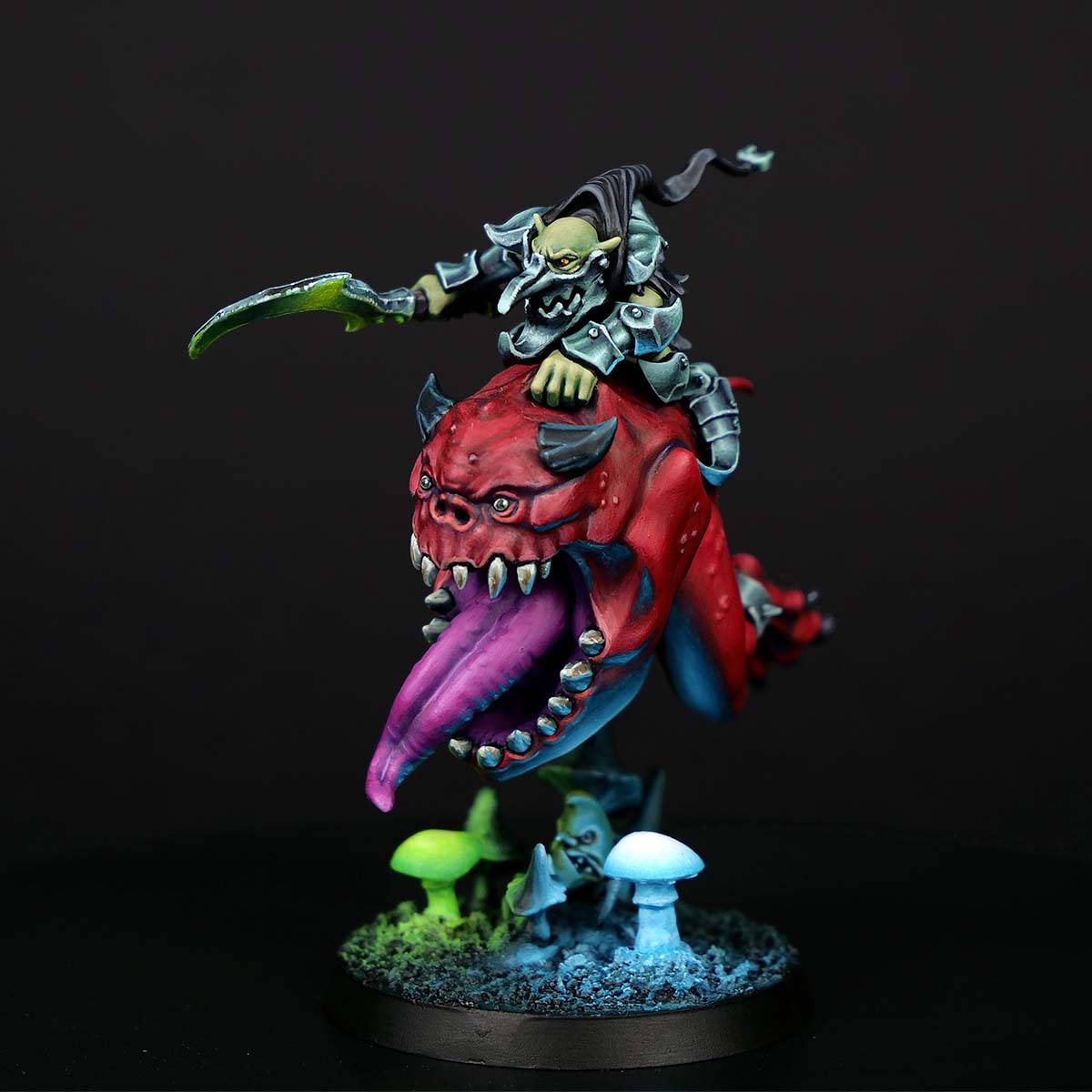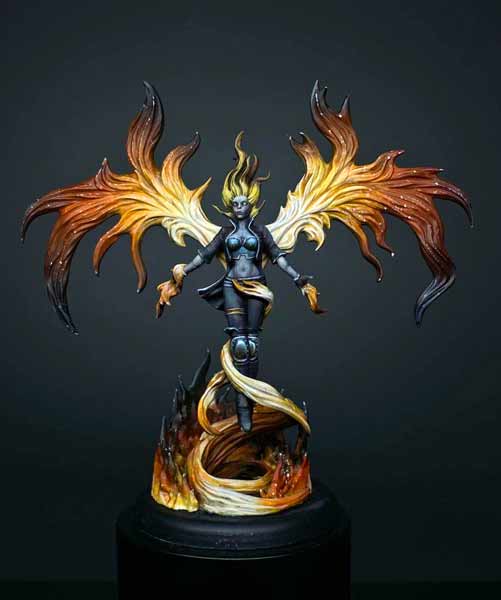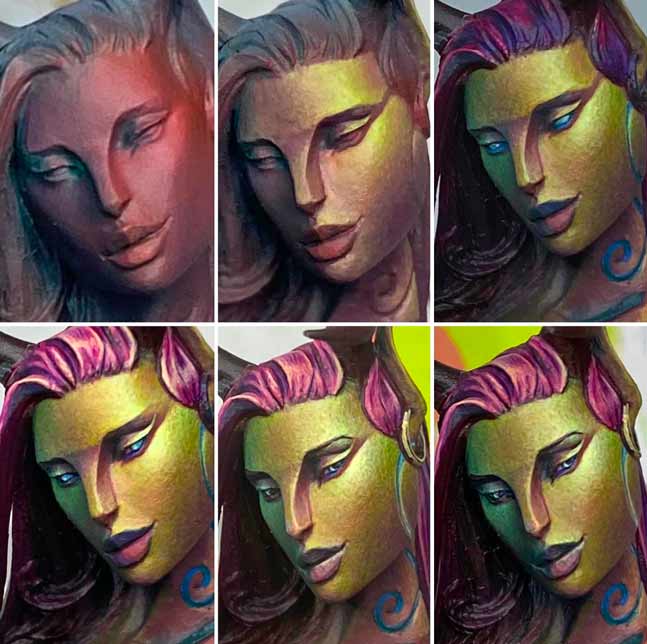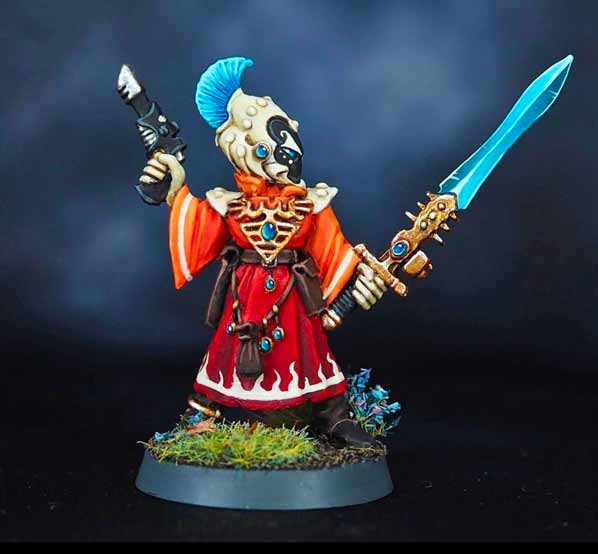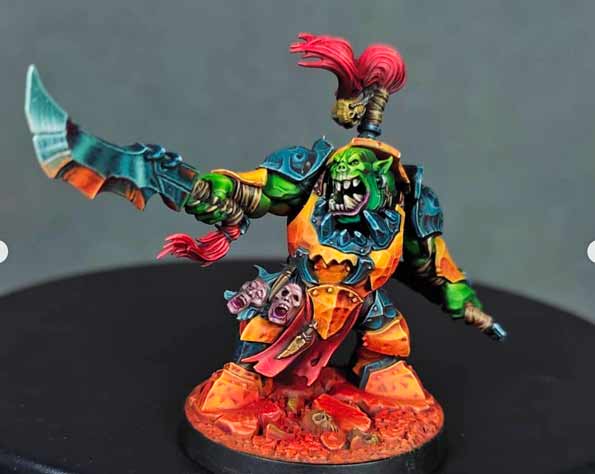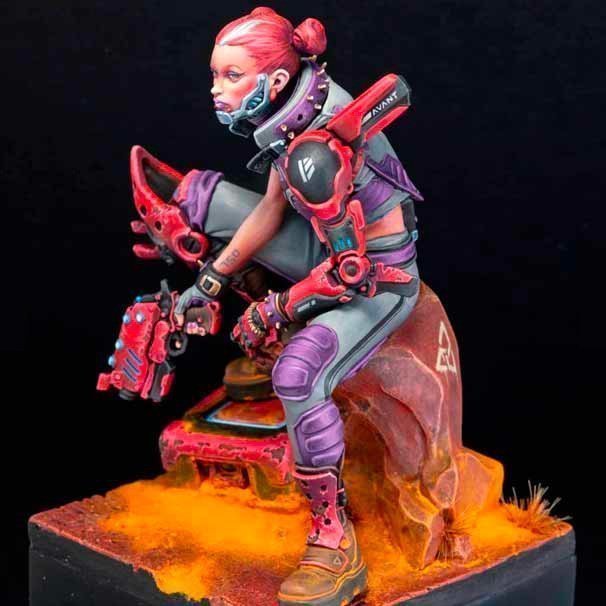
Color Schemes Miniature Painting
Redgrass Creative is lucky enough to work with many of the world’s best miniature painters. Wherever possible we love to be able to support what they do, and hear all about their processes. We asked them about their ‘must-have’ color schemes miniature painting tips.
This article is not about color theory, so much as it is simple, practical color ideas and how you should try them yourself. Some may even surprise you!
Color Schemes Miniature Painting: SHADOW COLORS

When painters are first starting out, many will stick to a black wash or a brown wash for their shadow colors. However, many other options are available!
Many of our pro painters who responded to our survey were keen to point out colors like purple.
Firebrush always uses a dark purple especially on clothes’ shadows. It is a cool color perfect for recesses, and also offers more depth than the traditional (and flat) black. Darker, bluer purples were recommended for your shadows, and they are also ideal for skin shading and muzzle burn!
I tend to gravitate towards cold colour schemes and combinations, like purples…I often paint with different shades and hues of purple, violet and amaranth, especially if there are prominent golden parts, as I can achieve good chromatic contrast (as they’re opposite in the colour wheel)
Albert Moreto Font

Color Schemes Miniature Painting: SKIN COLORS
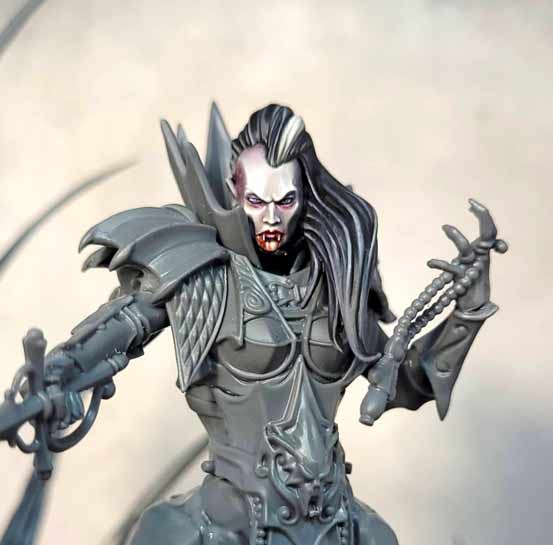
Skin is an element of painting that many of us struggle with. It can be hard to get convincingly smooth and consistent blends. Further, it can look flat and uninteresting. Most of our pro painters surveyed recommended a sunnier skin tone color here – colors with a touch of red but especially yellow. White is too stark and desaturating to highlight skintones, but ivories and pale yellows were almost universally recommended to lighten skin highlights. Angelo Di Chello is well known for his highlights, and prefers ivory to pure white to offer more contrast with his cooler paints.
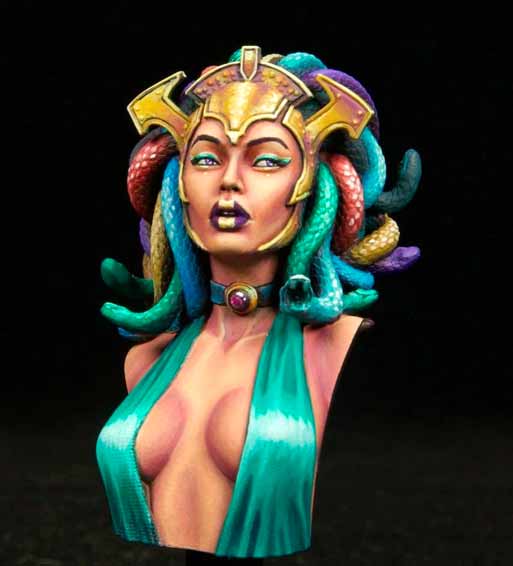
First of all, straight away, as a color to have, I can only mention Ivory. Substitute for white essential in my opinion, so much so as to make my community believe that I have gone to stock up on it wherever they find it sold out. Seriously, it is really a support color that in my opinion manages to give more body and warmth and that lends itself very well to countless situations.
Chiara Grassi from Kiki Miniatures Mania
Colour Schemes Miniature Painting: NMM (aka Non-Metallic Metal)
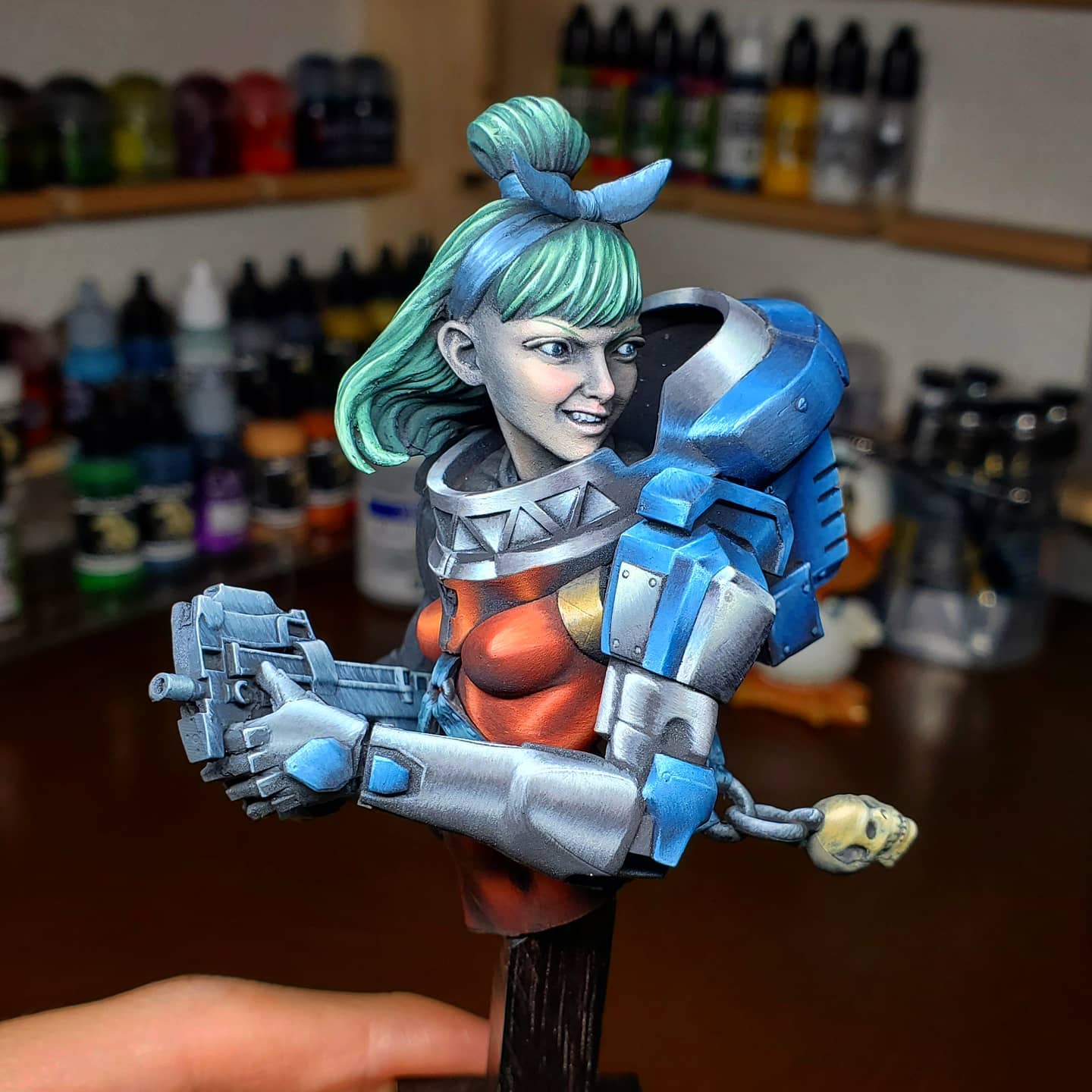
Non-Metallic Metal (NMM) is a process by which a painter uses normal paints to simulate a metallic finish – for instance on golden armor or a steel blade. To newer painters or ones more comfortable with metallic paints, NMM is an incredibly daunting prospect. However, many of the pro-painters we asked do use NMM techniques to a lesser or greater extent in their painting. The biggest take away from this was the value of using tans and browns. For a good gold, a lot of the process is in fact brown. For NMM silvers, Shige Matsui recommends mixes with Basalt Grey. Blue-grays building up with white added to the mix, can ensure a realistic steel sheen.
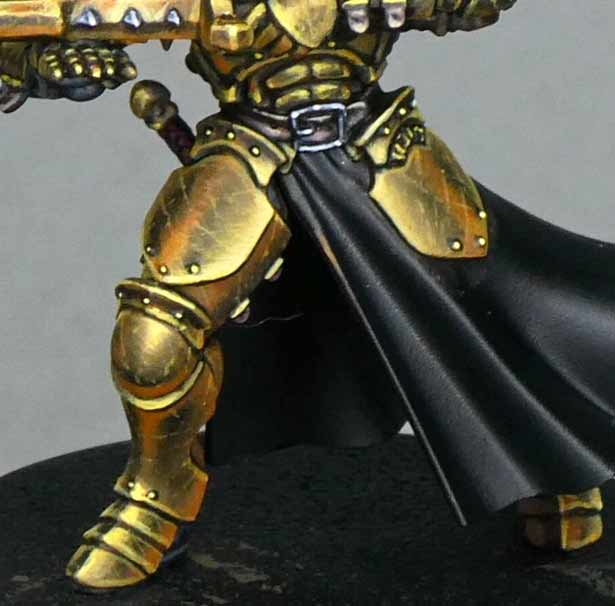
I use a lot of different brown paints for Non metallic gold/bronze/copper – they are basically the main elements, to create these metals. From this you can add yellow, green, red etc. but the main colour would be brown in different variations – I therefore can't go without them. The paints I use the most are mournfang brown, English uniform, balor brown, skrag brown, doombull brown, cavalry brown.”
NRM Paint
Color Schemes Miniature Painting:
A Spotlight on Turquoise
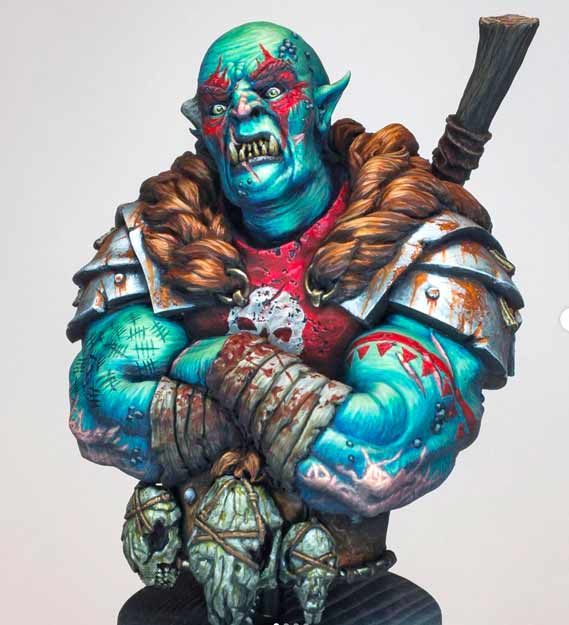
Much like in our last article in this series we mentioned magenta as a special paint. Turquoise, too, is also worth getting according to many of our painters. It is a vibrant color that can shift easily into blues, greens, warm or cool. Traditionally it has been associated with rarity and status. It can help you paint tropical seas or exotic beasts, as well as weather metal for a patina effect. A slight amount can make a great addition to shadows and ‘5 o’clock shadow’ on faces, says Will Hahn. It is incredibly versatile!
if you have been painting for some time already, you know the struggle of highlighting blue – add yellow and you get green instead, add white and it’s desaturated. The solution is going for cyan/turquoise paints. It’s also my go-to when I paint “blue” OSL!
Zumikito
Color Schemes Miniature Painting:
HIGHLIGHTS
How do we highlight a color? Just as we learned that you should avoid adding pure white for fleshtones, so too with your general color mixes! There are some colors that were almost universally recommended for this role, such as a pale yellow. Sunny skin tone in particular was singled out as a very versatile highlight color that could be added to a variety of things- Brushwarrior recommends it on leathers and flamework, not just skin!
I would like to make a separation between warm colours (Sunny skin tone, Ice yellow, White flesh, Off-white) and cool colours (Grey wolf, Verdigris) Depending on which colours I work previously and the lighting proposal on the figure I will illuminate with the ones I find more suitable. All of them have a lot of white in it’s composition but they have a wide and useful variety of tones and temperatures to give a different nuance to lights.
Droidena
Color Schemes Miniature Painting: INCREDIBLE INKS
Our last hack for painters to try this year is inks. Inks are very thin, but can offer very bold colors thanks to the dye in them. This makes them natural choices for washes and glazes. This could be a nice alternative to try for such techniques, instead of always thinning acrylic paints. Chestnut Inks in particular were mentioned by several painters as useful for depth of shadow, leather, skin, and NMM golds. Red is a color people struggle to highlight, but with a lemon yellow ink, Electric Eve can saturate and intensify any reds & oranges she is working on!
I’m a big fan of old inks, but not for general washes, but to create the last shadows on leathers and metals. The inks can provide levels of depth that matt colours cannot achieve. You can also play with the gloss shiny finish to create contrast against the matt midtones and lights. I love old good chestnut ink and red inks!
Olmo Castrillo Miniatures
Thank You to Our Artists!
This journey through the world of color schemes in miniature painting has been nothing short of enlightening, thanks to the insights from some of the world’s best miniature painters. Their shared wisdom on shadow colors, skin tones, NMM techniques, and the power of inks has hopefully given you new ideas or creative inspiration!
A big shout-out to all the artists who generously shared their tips and tricks with us. Their contributions have made this article a treasure trove of knowledge for both novice and experienced painters alike. Keep experimenting with these suggestions in your own work, and don’t forget to check out more of our articles for further inspiration.
Happy painting!

